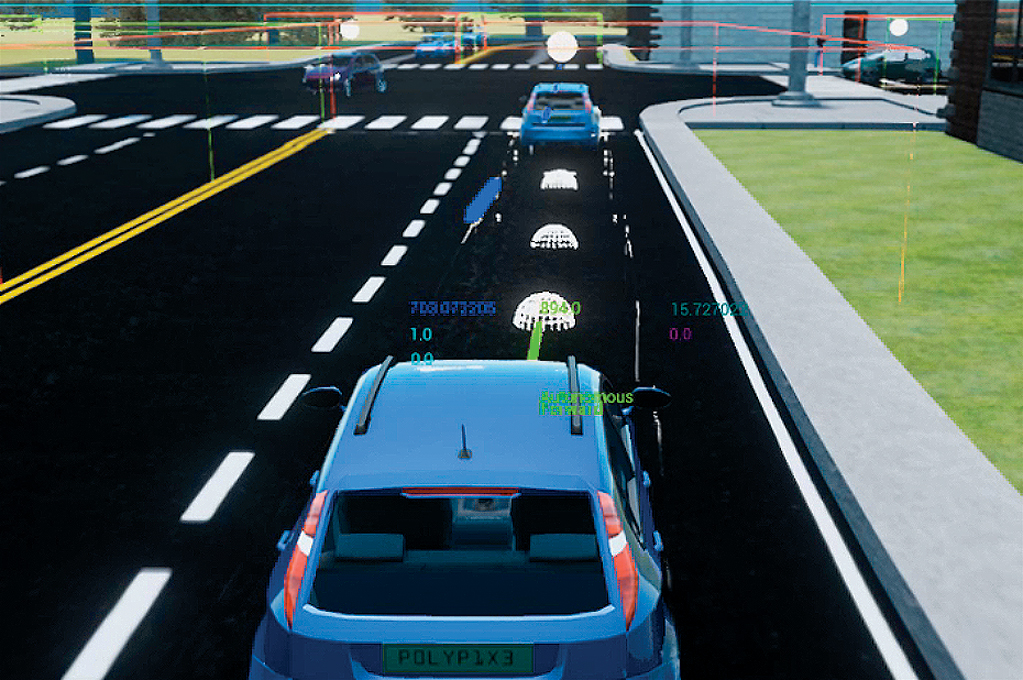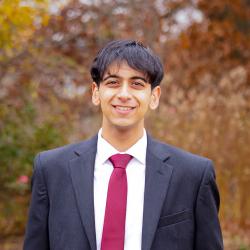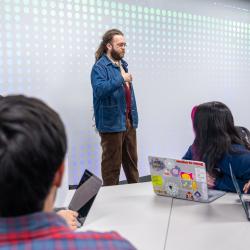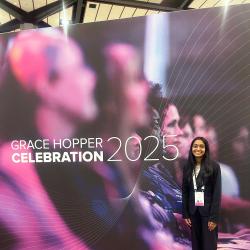A Real-life Boost for Virtual Research

Ming Lin and Dinesh Manocha had a lot of good reasons to pull up stakes after 25 years at the University of North Carolina at Chapel Hill and come to College Park.
Lin was appointed as the new chair of the University of Maryland's Department of Computer Science and holder of the Elizabeth Stevinson Iribe Chair of Computer Science. Manocha joined her as the Paul Chrisman Iribe Professor in Computer Science.
The couple are looking forward to new possibilities for their virtual and augmented reality research in the university's highly ranked computer science program—one of the country's largest—and the new Brendan Iribe Center, slated to open this spring.
They're especially excited about UMD's potential to be at the center of the country's next major technology corridor.
"I expect a 'cyber valley of the future' will take shape right here in the D.C. metropolitan area, all the way to Baltimore," said Lin, who also has an appointment in the University of Maryland Institute for Advanced Computer Studies (UMIACS). "What university is best positioned to lead this development? It's going to be the University of Maryland, College Park."
When Silicon Valley was rocketing to its place as the undisputed leader of computer development, Lin and Manocha were at the University of California, Berkeley. Lin studied there from 1986 to 1993 for her B.S., M.S. and Ph.D. in electrical engineering and computer sciences and Manocha earned his Ph.D. in computer science there in 1992. They saw firsthand the impact their school and Stanford University had on the region's digital success.
"In the economic development of a region, you assume a strong university plays a big role," said Manocha, who has joint appointments in UMD's Department of Computer Science, Department of Electrical and Computer Engineering, and UMIACS. Lin believes the time is right for the next wave of cyber innovation. "Technology is changing fundamentally the way we live as humans and as a society," Lin said. Students pay for lunch with their phones. Self-driving cars are no longer science fiction. The influence of technology on elections and privacy promises to stay in the headlines.
"Technology is no longer a next phase of development, and research is no longer going to be stand-alone," Lin said. "There will be many interesting challenges and questions regarding policy and regulations. Examining how technology will affect society will be an integral part of our research."
The virtual and augmented reality research that Lin and Manocha do is valuable for the gaming and animation industries. A number of Lin and Manocha's students have graduated and gone on to jobs at places like Pixar, Disney and Oculus—the virtual reality company co-founded by UMD alumnus Brendan Iribe. But Manocha and Lin's research efforts also focus on looking at how these technologies can create virtual environments to help people on a larger scale.
"We have not just been looking at the pure 3D computer graphics representations and animations and simulations, but also at how they would live in a virtual world, using real data to predict how humans behave and move," Lin said. "We're constantly working on problems that have an impact on society as a whole, and that's critical because we're hoping through research that we can make a bit of difference."
For example, Manocha has been using virtual and augmented reality to study crowd safety and prevent disasters like the 2015 Mecca Hajj disaster in Mina, Saudi Arabia. That year an estimated 2,200 people were killed in a crush around the Kaaba, a building at the mosque's center, during the pilgrimage that brings 2 million people annually to Islam's holiest site.
"We wanted to see if we could simulate the movement of the pilgrims and improve their safety," Manocha said.
That meant accurately simulating the behavior of a crowd of millions, figuring out how people would move and change in reaction to the environment and stress, and understanding the culture of the crowd. Different cultures react differently to stress, according to Manocha.
Simulating human interactions also requires simulating human emotions, Lin explained.
"If you want to model any real world, you have to model everything, including human behavior," Lin said. "Modeling and simulating human behavior is an integral part of any virtual environment, and it's one of the most complex and challenging problems."
Lin's research has used virtual and augmented reality to better predict vehicle collisions and improve traffic control, an issue that promises new challenges as more autonomous vehicles take to the road. One of Lin's projects, the Road Network, is a library of methods for creating a 3D model of a large-scale road network that can be used for real-time traffic simulation, interactive visualization of a virtual world and autonomous vehicle navigation. This information can be used to make broader decisions about safety, policy and highway construction.
"The virtual environment has many advantages over testing that uses real people, which is expensive and difficult to do," Lin said. "If you want a larger-scale study, then you can use a virtual environment to test as many scenarios as possible for an autonomous car to interact with a human. And you can evaluate possible designs much quicker in a virtual environment."
Lin's research also employs virtual and augmented reality to improve health care. In 2016, one of Lin's research teams showed how using medical images could help to more accurately diagnose and treat prostate cancer in individual patients. By reconstructing 3D geometry from sets of multiple-view images and combining the findings with patient data, such as age and family history, the team determined a likely prognosis and a more timely diagnosis and treatment for cancer.
The virtual reality images can also be used for virtual surgery, which lets surgeons practice and experiment on 3D augmented reality objects without risk to a patient.
Several members of Lin and Manocha's UNC lab have joined them in College Park. Their research labs will be located in the new Brendan Iribe Center when it opens this spring, and the research team has begun to collaborate with other experts on campus in areas such as physics, math and engineering.
"We believe that the University of Maryland can become a leading university in virtual and augmented reality," Manocha said. As computer science department chair, Lin also looks forward to additional challenges. Long active in efforts to increase the number of women in science, Lin wants to recruit more women and underrepresented minorities to the department, which may already have the country's highest number of women computer science undergraduates.
She also relishes the challenge of creating that next technology corridor, with the department and university at its center. It's a realistic goal, she said, partly because of what's already been set in motion by the university and its donors.
"I want to thank the donors, especially the Iribe family, both Brendan and his mother, Elizabeth. If they didn't have their vision and desire to give back, none of this would have happened," Lin said. "Their support of a new building and endowed faculty positions has totally transformed the university and even the state. Funding for virtual and augmented reality research is even part of a state bill. That's just incredible. I think the biggest beneficiaries, however, are the students and the rest of us in the department."
Written by Ellen Ternes
This article was published in the Winter 2019 issue of Odyssey magazine. To read other stories from that issue, please visit go.umd.edu/odyssey.







